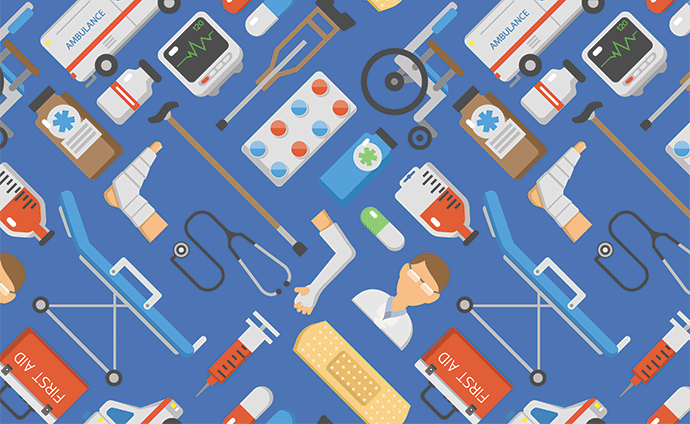Improving Patient Outcomes Surpasses Reducing Cost as Top Priority
More health system clinicians and executives in this year’s survey ranked improving patient outcomes as their top focus area in 2019, JJMDC reports.

Source: Thinkstock
- A new survey from Johnson & Johnson Medical Devices Companies suggests health system clinicians and executives are moving beyond traditional cost cutting initiatives to address cost pressures and focusing more on strategic cost transformation.
In the second annual survey, about 57 percent of the 140 health system clinicians and executives surveyed cited improving patient outcomes as their top focus area in 2019, up from 48 percent in 2018.
With more health system leaders ranking improving patient outcomes as number one, the focus area surpassed reducing costs. Clinicians and executives identified reducing costs as the top priority last year, and while reducing costs was still a major concern for the health system leaders, the percentage of respondents selecting the focus area as a top priority decreased from 75 percent to 55 percent from 2018 to 2019.
“It's clear from the survey that health system leaders are looking beyond costs to overcome challenges and improve the outcomes for their health systems,” Melinda Thiel, vice president of health system value transformation at Johnson & Johnson Medical Devices Companies stated in a press release.
Thiel found that health systems are moving toward “more holistic solutions that can truly impact the patient experience, strengthen the wellbeing of healthcare professionals and ultimately improve the bottom line.”
READ MORE: Healthcare CFOs Look Forward to Value-Based Care, Consumerism
That trend was reflected in the other top focus areas for health systems in 2019. Clinicians and executives also identified enhancing care quality, improving the patient experience, and improving staff satisfaction as top priorities this year.
All five of the top focus areas in 2019 highlighted the importance of value-based care implementation. Improving care quality, reducing costs, and boosting patient and provider satisfaction are all goals of the move to value.
As health systems continue to replace fee-for-service processes, improving clinical performance is becoming increasingly important to achieving better care quality, lower costs, and increased patient and provider satisfaction, clinicians and executives agreed.
Almost nine-in-ten health system leaders said better patient outcomes is the greatest benefit of improving clinical performance. Fifty percent of clinicians also cited improved patient satisfaction as a big benefit, while executives were more likely to say reducing costs (45 percent) as a major advantage.
While not top tier benefits according to the survey’s methodology, improving staff satisfaction and health system reputation were cited as benefits of improving clinical performance by fewer than one-in-five clinicians (21 percent and 11 percent, respectively) and executives (18 percent and 17 percent, respectively), the survey showed.
READ MORE: Value-Based Purchasing, Consumerism Top Healthcare Exec Challenges
Improving clinical performance has to potential to address cost pressures and value-based care, but health system leaders are facing major obstacles with achieving enhanced clinical performance, the survey stated.
Clinicians and executives cited nearly every potential barrier to improving clinical performance as a significant obstacle. Those barriers included cumbersome processes, lack of financial incentives for clinicians, and uncertainty about how to measure improving clinical performance.
In addition to improving clinical performance, increasing operation efficiency was also a top priority for health systems in 2019, particularly among executives.
Nearly all executives (95 percent) and about three-quarters of clinicians said improving operational efficiency is a high priority for their health system this year. About one-half of clinicians and executives said improving communication between staff is the key strategy for improving operational efficiency, while 38 percent of clinicians and 55 percent of executives said aligning staff with goals is the most important way.
Clinicians also said perioperative efficiency programs were essential for improved operational efficiency. Eighty-six percent said the programs improve time management and 76 percent said the programs improve overall operating room performance. Executives tended to agree, with 77 percent saying the programs can advance time management, quality of care, and patient satisfaction.
READ MORE: 76% of Execs to Invest in Predictive Analytics for Revenue Cycle
The benefit of improved operational efficiency is supply chain optimization, the survey showed. Fifty percent of clinicians and 48 percent of executives cited supply chain optimization as an outcome of increasing efficiency.
One-half of clinicians and more than two-thirds of executives believe supply chain optimization can reduce costs, and 46 percent of clinicians and 42 percent of executives said the process can reduce waste.
However, getting needed supplies is a top pain point for clinicians, the survey found. Forty-one percent of clinicians versus 17 percent of executives found supply access to be a top challenge of supply chain optimization. Executives were more likely to cite cost as the greatest challenge (28 percent of executives versus 20 percent of clinicians).
Health systems need to change the culture to optimize the supply chain, clinicians said. Seventy-five percent of clinicians reported organizational silos or lack of employee alignment as top barriers to supply chain optimization, while executives viewed a lack of integrated supply chain technologies as the greatest obstacle.
Supply chain is becoming an increasingly important area for health system cost reduction. The supply chain represents close to a third of the average hospital’s overall operating expenses and the department is slated to surpass labor as a hospital’s greatest expense by 2020, according to industry experts.
Health systems see a return on investment with supply chain optimization. Hospital leaders in a recent Sage Growth Partners survey said improving the supply chain can improve hospital margins, and 52 percent report increased between one and three percent.
To realize the financial benefits and improve patient outcomes, health system leaders are making supply chain optimization a priority, the Johnson & Johnson Medical Devices Companies survey showed. They are also focusing on improving the consumer experience and reducing clinician burnout, the company pointed out.
